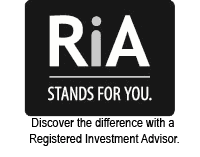In today’s historically low tax environment, Roth IRA conversions are a popular consideration for building tax-exempt retirement savings. But should you consider it; why or why not? Take a look at the Roth IRA conversion pros and cons to make that decision.
Breaking Down the Pros and Cons of Roth IRA Conversions
Driven, in part, by lower income tax rates and an increase in early retirements, the merit of Roth-IRA conversions has quickly become one of the more common questions we advisors are asked. It is an understandable ask and too important of a strategy not to consider. Like anything, however, the case for and against these conversions can depend on several factors. We cover many of these factors in this article. But first, what is a Roth IRA conversion?
These conversions entail the movement of pre-tax funds from an account such as a 401(k), 403(b), or traditional IRA, to an after-tax Roth IRA that offers both tax-deferred growth and tax-free distributions assuming you are 59 ½ or older and the account has been open for 5 years. You are paying taxes now on the conversion today to avoid having to pay them later upon withdrawal. In theory, you are banking on your tax rates being higher in the future, relative to what you’re paying today. While significant, the considerations for Roth IRA conversions go beyond potential tax benefits. Understanding the pros and cons could be the difference between employing this strategy or avoiding it altogether.
Pros: The Advantages of Roth-IRA Conversions
Roth IRA conversions can be beneficial for different reasons depending on many factors. These factors include your age, income level and potential changes to income, legacy desires, and need for retirement income diversity. That said, here are some of the more significant benefits that can become clear through a Roth IRA conversion:
Retirement Income Tax Efficiency
This is a broad advantage and the one with the most appeal. Let’s break it down into specific Roth IRA characteristics that contribute to its tax efficiency for retirement.
- Tax-free Withdrawals. If you have met the five-year rule (each Roth IRA conversion, has its own five-year “clock”) and are at least age 59 ½ any withdrawals will be tax-free and won’t be included in your taxable income. This has the additional potential benefits of reducing your Medicare parts B and D premiums (income based), while also prolonging the availability of your other retirement assets.
- No Required Minimum Distributions (RMDs). Beginning at age 72 you’re required to take distributions from your tax-qualified retirement accounts like a traditional IRA, 401(k), or 403(b). These RMDs are considered taxable income and subsequently, increase your tax burden. With Roth IRAs, RMDs are not requirements. If you don’t need to make withdrawals to cover your living costs, keep the funds in your account and let them continue to grow tax-deferred.
- Income Diversity. One day you will retire and spend more time doing the things that you enjoy. Having diversity in your income sources will give you the ability to make withdrawals in the most tax-efficient manner possible. Maintaining pre-tax buckets like your 401(k) or a rollover IRA, a taxable account like a brokerage (higher cost basis), and your tax-free Roth IRA will help to enable this tax efficiency.
Legacy Planning
A Roth IRA can be one of the most tax-efficient means of leaving an inheritance for your heirs. Because Roth IRAs have no RMDs, they can continue to grow throughout your retirement, potentially making for a large legacy. While the IRS requires non-spouse beneficiaries like children or grandchildren to withdraw the entire account within 10 years of inheriting it, these distributions are tax-free to them.
Flexibility
Even though your Roth IRA conversion has a five-year clock and age requirement for qualified distributions, it does offer certain withdrawal exceptions. The following withdrawals can occur without penalty:
- A down payment on your first home purchase. Up to $10,000 (lifetime maximum) may be taken out for this purpose.
- Paying for higher education costs for yourself, a spouse, your children, or grandchildren.
- Covering medical costs or health insurance if you are jobless.
- Qualified costs related to a birth or adoption.
Cons: The Case Against Roth IRA Conversion
There is much to assess when considering a Roth IRA conversion. The above advantages may offer a compelling case for making a conversion. On the other hand, any decision should also take into account potential drawbacks:
Cost
Converting pre-tax funds in a 401(k), 403(b), or a traditional IRA to a Roth IRA can get expensive in terms of taxes paid. Consider a married couple with a blended taxable income of $180,000. A Roth IRA conversion of $50,000 would cost them $12,000 in additional taxes at a marginal tax rate of 24 percent. Usually, it’s more efficient to pay these taxes with after-tax dollars as opposed to using funds in the converted IRA. Doing so helps to reduce your taxable income while maintaining the tax-deferred status of funds that would otherwise be taxed. Ultimately though, Roth conversion can be expensive, particularly for those with relatively higher income.
Payback Period
Continuing with the married couple above let’s assume that they choose to move forward with their $50,000 Roth IRA conversion and pay the $12,00 in taxes to do so. They now have $38,000 in a Roth IRA versus $50,000 in their pre-tax traditional IRA. Let’s also assume our married couple is age 60. Even considering their retirement tax implications and reduced Required Minimum Distributions (RMDs), in some instances it may take this couple 15 to 20 years to recoup their $12,000 expense for making the original conversion. That is a long payback period.
Waiting Game
As previously mentioned, each of your Roth IRA conversions has a 5-year “clock” that begins on January 1st of the tax year in which you make the conversion. Any withdrawals within that 5-year period have penalties (unless it falls under one of the exceptions), even if you’re over age 59 ½. If you need funds within that time period, you could find yourself paying a hefty price to withdraw.
Existing Roth Funds
Perhaps you have built up Roth account funds by contributing to a Roth-401(k) or by making Roth IRA contributions over the years. If you already have a significant balance of tax-exempt savings to lean on in retirement, then the extra benefits of making a Roth IRA conversion may not be compelling.
The Bottom Line
While Roth IRA conversions are currently in vogue for a number of reasons, they should have careful consideration. The case for these conversions is not as clear-cut as many would like to believe. Factors like age, income level, expected future changes to income, diversity of retirement assets, and desire for leaving a legacy all factor into this important decision. Review these Roth IRA conversion pros and cons with your trusted financial advisor to make a well-informed decision.
Don’t have a trusted financial advisor at the moment? Feel free to reach out to us! Dickmeyer Boyce is here to help you manage your finances.








